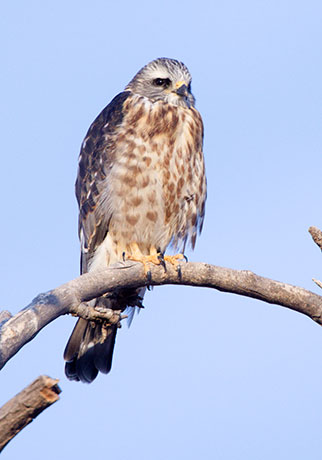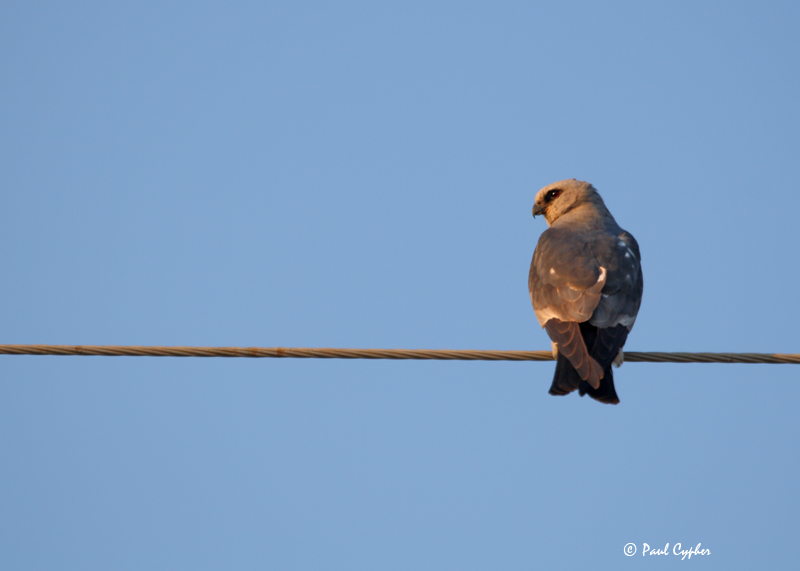

Sometimes, they hang around bison, horses, deer, and people and snatch whatever insects are flushed out by their activities. They also hunt from their perch in trees and snag snakes, turtles, small birds, lizards, frogs, and fish. They capture medium to large-sized insects like grasshoppers, beetles, cicadas, and dragonflies. Most of the time, Mississippi Kites forage from the air and catch their prey and eat them while in flight. In cityscapes, they’re likely to perch on tall buildings. It is best to keep your sights above the trees for they love to sail on the wind and float in the air. You can find Mississippi Kites in small woodland forests in the prairies, dense old-growth hardwood forests, and more recently, in tree-lined areas like windbreaks, shelterbelts, city parks, golf courses, and other urban areas. Mississippi Kites breed in the southern and eastern United States and migrate to South America, mainly Argentina, Paraguay, Uraguay, and southern Brazil.

Juveniles have heavily streaked brown and white bellies, heavily mottled wings, and long, banded tails. Male and female Mississippi Kites look similar except that males are slightly paler than females. They have long, dark tails and red legs and feet. Their primary wings are dark gray, their secondary wings are white, and their wingtips are black.

Their underparts are light gray while their upperparts are dark gray.
#White moroh mississippi kite Patch#
They have light gray heads, red eyes with a dark eye patch in front, and small, strongly hooked dark bills. Mississippi Kites are small and slender birds of prey. They are spotted here from March to October. Mississippi Kites breed in Louisiana and are recorded in 27% of summer checklists submitted by bird watchers for the state. There are many types of birds of prey that can be spotted in Louisiana, including owls, hawks, eagles, and vultures. In North America, they are found mostly in southern states. Kites can be found worldwide but are more in warmer regions. There are 3 species of kites in Louisiana that have been spotted and they are the Mississippi Kite, Swallow-tailed Kite, and the White-tailed Kite. They spend a lot of time soaring looking for prey, so looking up is a great way to spot them, even on car journeys. Swallow-tailed Kites are generally gregarious, nesting in loose colonies and gathering in large communal roosts, especially just prior to fall migration, when over 1000 may stage together at a single site.Kites are small birds of prey that are known for their amazing ability to fly into the wind and hover, which is known as kiting. Swallow-tailed Kites nest in large trees along swampy river systems across the Southeast but regularly stray north and sometimes west of their mapped range, especially in late spring.

They are rare but regular vagrants north of their mapped range, mainly seen in late spring. Swallow-tailed Kites are beginning to return to former breeding areas, especially in east Texas and Louisiana. They have withdrawn from their historic breeding range, which spanned the Mississippi floodplain north to Minnesota, due to logging of bottomland forests, agriculture, and human persecution. Swallow-tailed Kites are fairly common across most of Florida but are local elsewhere along the Gulf Coast. Swallow-tailed Kites are rarely seen perched, except occasionally in the early morning before thermals develop. They also pluck reptiles, birds, and other prey items directly from treetops. They are large, graceful raptors that float effortlessly when soaring or hunting on the wing and are highly maneuverable when swooping and diving for dragonflies. The long forked tail and striking black & white plumage render the Swallow-tailed Kite unmistakable in flight.


 0 kommentar(er)
0 kommentar(er)
